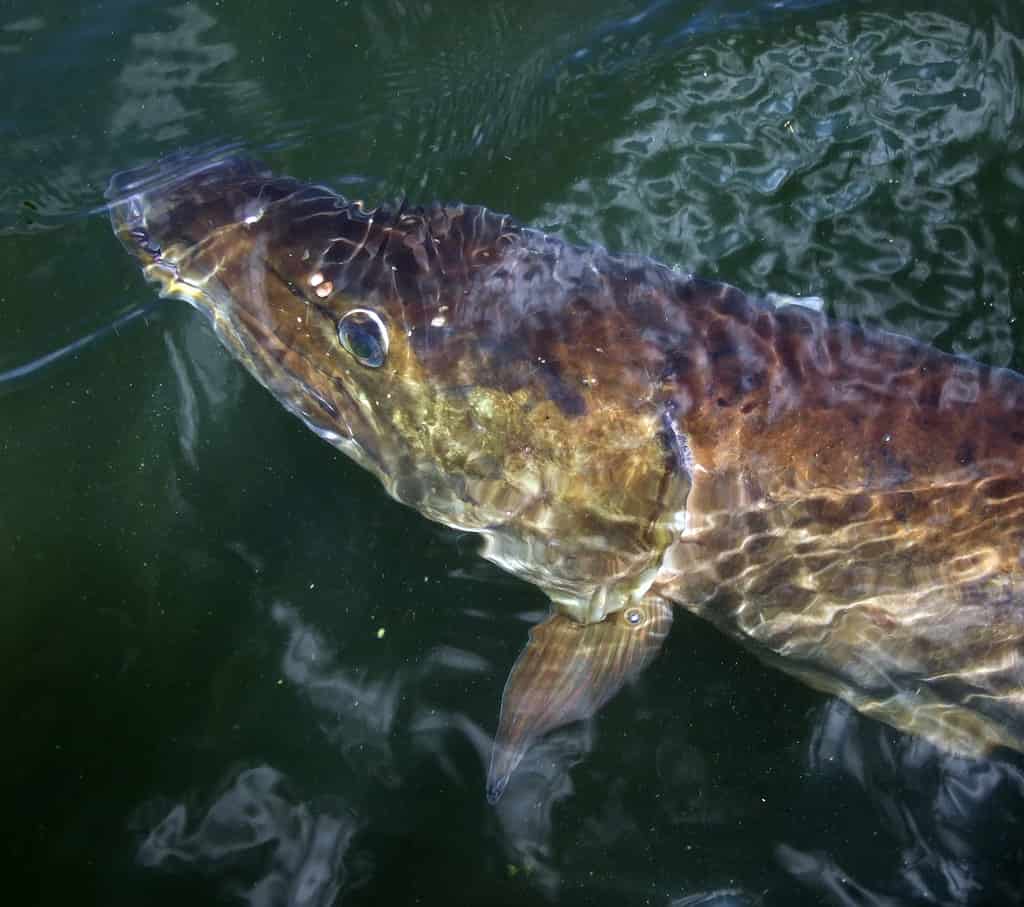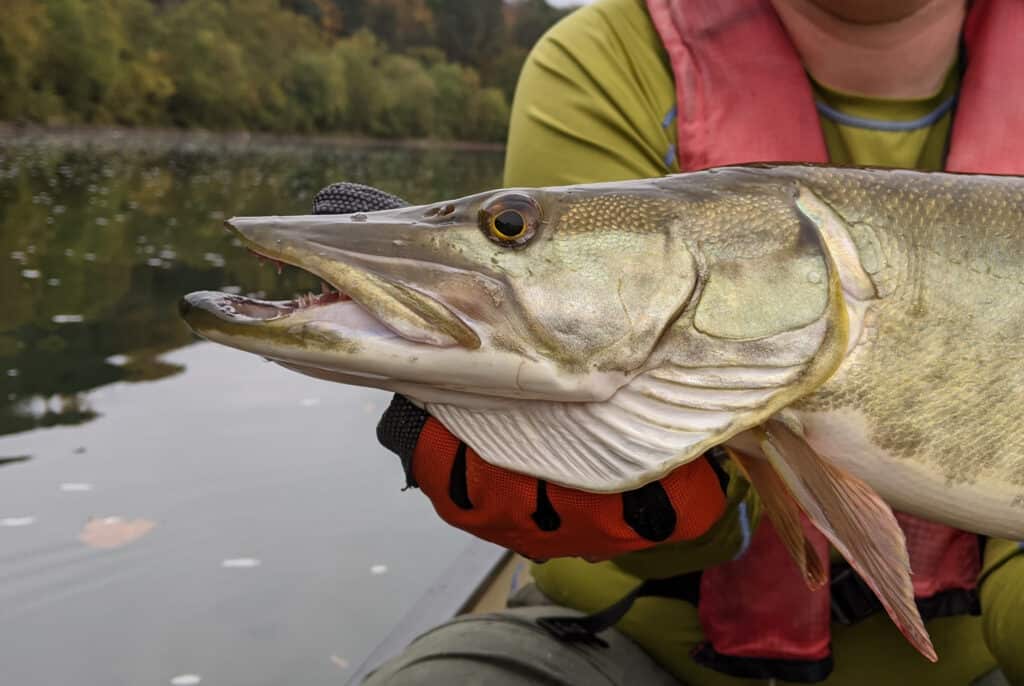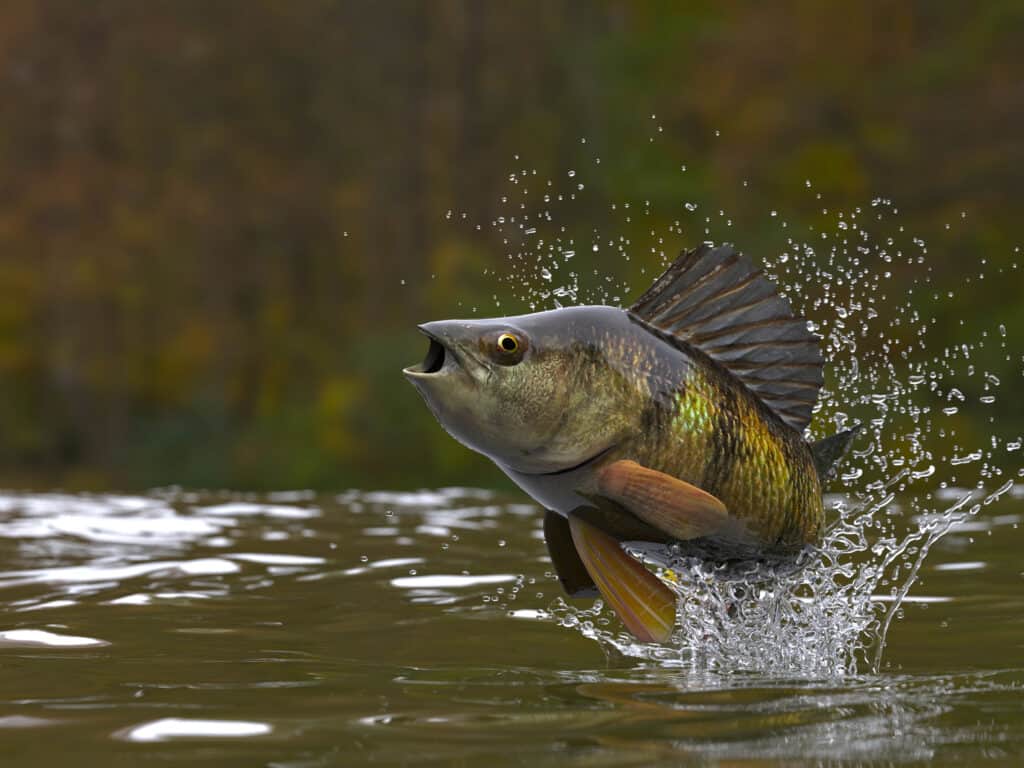In 1949, a Muskellunge set a world record by weighing 68 pounds and 8 ounces in Wisconsin.
Advertisement
Muskellunge (Muskie) Facts
- Fun Fact
- In 1949, a Muskellunge set a world record by weighing 68 pounds and 8 ounces in Wisconsin.
- Biggest Threat
- large northern pike, lake trout, and other large fish
- Other Name(s)
- Muskie
View all of the Muskellunge (Muskie) images!
The muskellunge, commonly referred to as the muskie, is a large, predatory species found in freshwater lakes and rivers across North America. It is distinguished by its impressive elongated body, large mouth, and sharp teeth. Muskellunge fish are solitary creatures, rarely seen in groups. They feed on other fish, frogs, and small mammals and have the potential to live up to 20 years in the wild. As such, they are highly sought-after by anglers and are considered a prized catch due to their size and strength, making them valuable species in their ecological environment.
4 Fun Facts
- Muskies are nicknamed the fish of 10,000 casts because they are notoriously difficult to catch.
- In 1949, a Muskellunge set a world record by weighing 68 pounds and 8 ounces in Wisconsin.
- Muskies consume prey weighing up to 30% of their body weight.
- This fish can recognize and avoid artificial lures, making them very challenging to catch.

is a large, predatory species found in freshwater lakes and rivers across North America.
©M Huston/Shutterstock.com
Classification and Scientific Name
This fish belongs to the Esocidae family and is scientifically known as Esox masquinongy. Muskies also go by two additional terms, which include milliganong and maskinonge.
Species of Muskellunge
Scientists have established that only one distinct species of muskellunge exists. However, there are three subspecies of this type of fish which include barred muskie, clear muskie, and spotted muskie.
Although these subspecies share similarities in appearance and behavior, they have distinct differences in habitat.
Appearance of Muskellunge

Muskellunge, known as muskie, has a large, flat head with a protruding lower jaw.
©M Huston/Shutterstock.com
Expert fishermen can easily identify muskellunge because of their large size and impressive appearance. Its distinct coloring and features display a dark green back, a light yellowish-green belly, and cream-colored vertical stripes down its sides.
It has a large, flat head with a protruding lower jaw and a long, slender body. Its fins are small, and its tail is forked, giving it a fast-swimming speed. The muskellunge fish can grow up to 6 feet long and weigh up to 60 pounds. Overall, the muskellunge’s appearance is designed for speed, power, and stealth. Its long, streamlined body, sharp teeth, and powerful tail make it a formidable predator in the water.
Distribution, Population, and Habitat of the muskellunge fish
Distribution: The Muskellunge is found throughout Canada and northern parts of the United States. Introduced to other areas, including the Great Lakes and some waters in the eastern and western parts of the United States, this species is not native to the continent’s southern regions.
Population: The introduction of non-native fish species, habitat degradation, and overfishing have all had an impact on the species. Conservation efforts, such as catch-and-release fishing, have helped to protect this species.
Habitat: Muskellunge prefers large clear lakes and rivers with rocky or weedy bottoms with depths of at least 20 feet. As the top predator in its ecosystem, muskies feed on other fish, frogs, and even small mammals such as muskrats and squirrels.
Predators and prey
The muskellunge has few natural predators in its ecosystem, including large northern pike, lake trout, and other large fish. Despite their size and strength, this fish species is vulnerable to attacks from larger predators.
While larger muskellunge can take on larger prey, such as ducks and other waterfowl, they usually prefer consuming smaller fish, including:
- Yellow perch
- Whitefish
- Ciscoes
- Crayfish
- Frogs

Muskie prefer consuming smaller fish such as yellow perch.
©bekirevren/Shutterstock.com
Reproduction and Lifespan
This species of fish has a unique reproductive cycle. Unlike most fish species, the muskellunge does not lay eggs. Instead, the female will carry the fertilized eggs in her body until they hatch. This process can take up to two months. After hatching, the fry remains in the female’s body until they are big enough to swim independently. Because these fish are slow-growing, they can take up to five years to mature.
Factors such as food availability, water temperature, and genetics can all influence the lifespan of a muskie. However, this hardy fish generally can live up to 20 years in the wild and even longer in captivity.
Fishing and Cooking

Muskellunge are highly sought-after by anglers and are considered a prized catch due to their size and strength.
©M Huston/Shutterstock.com
Fishing: Muskellunge are typically caught using large, sturdy fishing rods and reels with heavy lines and lures. Successful techniques for catching muskies include trolling, casting, and jigging. Anglers may use a variety of lures, including large spinners, plugs, and soft plastic baits.
Live bait such as suckers, minnows, or leeches can also be effective. It’s essential to handle muskies carefully when catching and releasing them to minimize stress and injury to the fish.
Cooking: Muskellunge is a delectable fish that is prepared in a variety of ways. The flesh of a muskie fish is white, firm, and has a subtle taste. Walleye and bass share a similar flavor to that of a muskie.
Grilling, roasting, baking, and frying are the most common ways to prepare them. To give this fish an extra boost of flavor, add some herbs, seasonings, and marinades.
It’s important to note that muskellunge can accumulate high levels of mercury in their flesh, particularly in areas with industrial pollution or other environmental hazards. Therefore, as with any fish, it’s critical to follow safe consumption guidelines and be aware of any advisories or warnings about eating muskellunge from specific bodies of water.
View all 164 animals that start with MMuskellunge (Muskie) FAQs (Frequently Asked Questions)
What do muskellunge fish eat?
While larger muskellunge can take on larger prey, such as ducks and other waterfowl, they usually prefer consuming smaller fish, including:
- Yellow perch
- Whitefish
- Ciscoes
- Crayfish
- Frogs
Are muskellunge fish difficult to catch?
Muskies are nicknamed the fish of 10,000 casts because they are notoriously difficult to catch.
What is the lifespan of muskellunge fish?
Factors such as food availability, water temperature, and genetics can all influence the lifespan of a muskie. However, this hardy fish generally can live up to 20 years in the wild and even longer in captivity.
Thank you for reading! Have some feedback for us? Contact the AZ Animals editorial team.
Sources
- Wikipedia, Available here: https://en.wikipedia.org/wiki/Muskellunge
- Take Me Fishing, Available here: https://www.takemefishing.org/fish-species/muskellunge/
- Discover Boating, Available here: https://www.discoverboating.com/resources/freshwater-fish-muskellunge

















